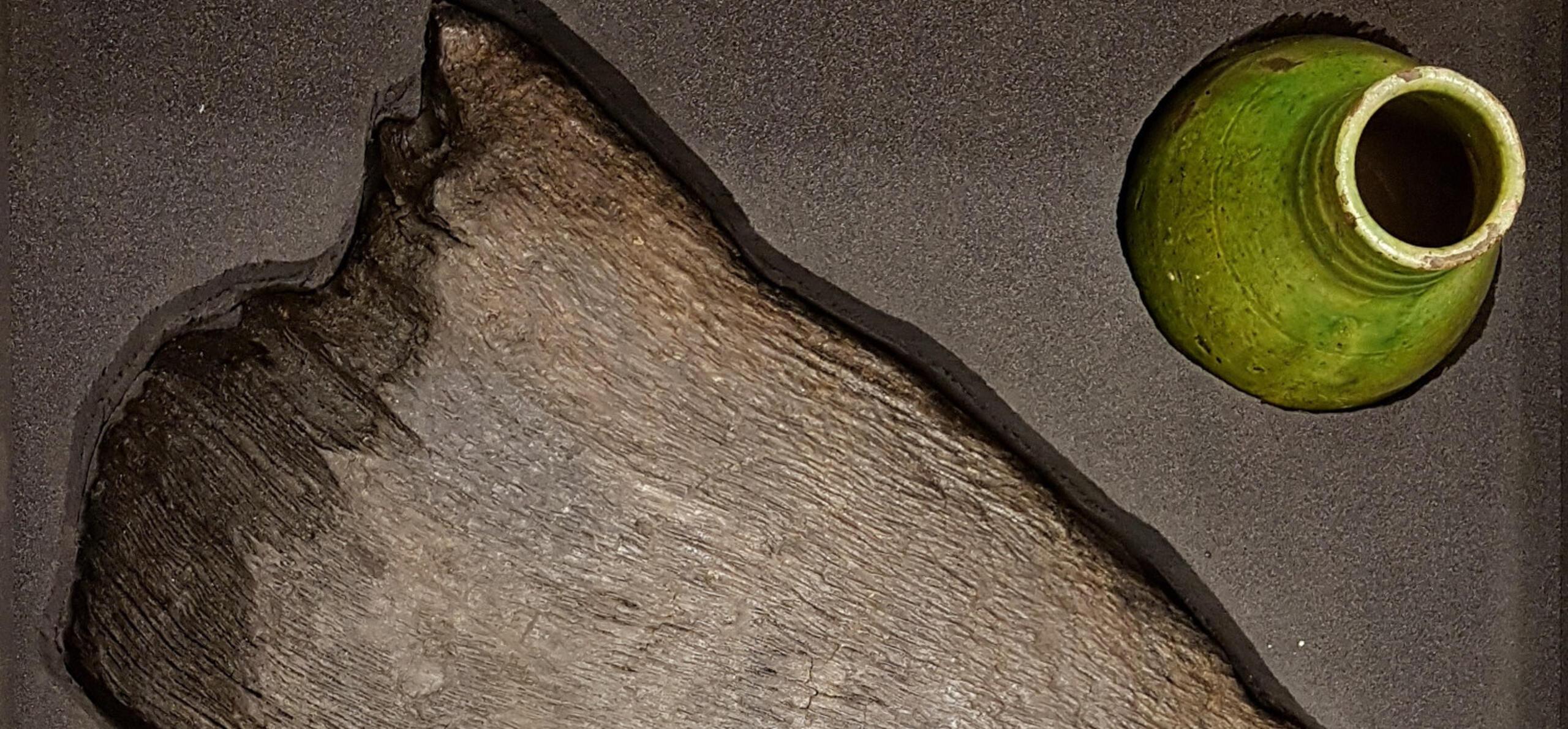Our Loans service began in 1911 and is still incredibly popular with schools today, covering all aspects of the curriculum.
The collection contains over 2000 real objects that can be loaned out and explored at schools and other organisations. You can search our loan boxes here or contact the Education Team here.
With the Abbey soon to be revealed, we thought we would reveal some of our more unusual objects.
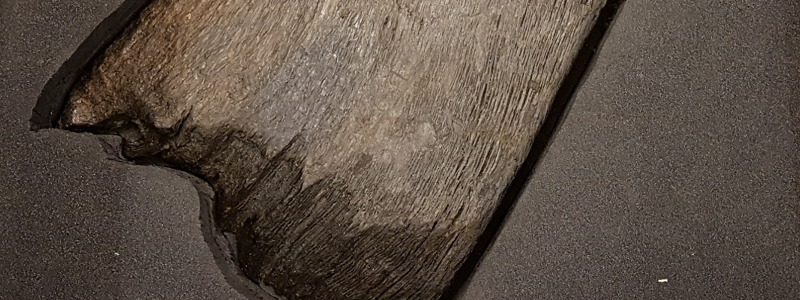
Timber from Reading Abbey Wharf
1. A piece of Wood
This is actually a section of timber found during excavations at the site of Reading Abbey during 1979-86.
The Abbey was a hub of activity that required many resources to keep going. They needed food, wool, wood, stone and many other items for repair and maintenance. This meant that the Abbey needed a wharf for boats to drop off the many resources they used.
This piece of wood was a part of that wharf and in itself a vital contribution to the smooth running of Reading Abbey!
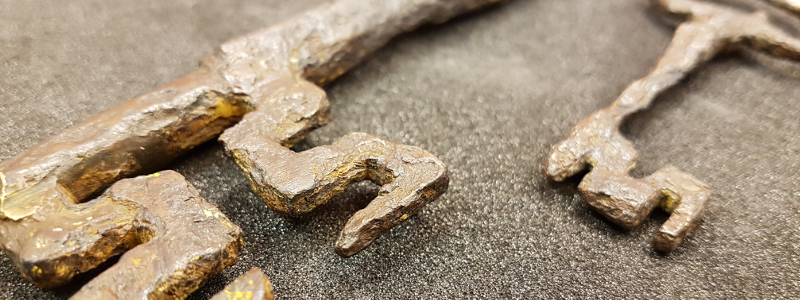
Keys like those used at Reading Abbey
2. Abbey Keys
These keys are genuinely impressive. They were actually used in the Abbey (in the later part of its existence) and work in the same way as today, with shapes that push pins as they are turned in the key hole to unlock the mechanism.
This is amazing because they weren't made by a machine that produces keys to set specifications in a mould, but by a blacksmith who worked the metal with tongs and hammer!
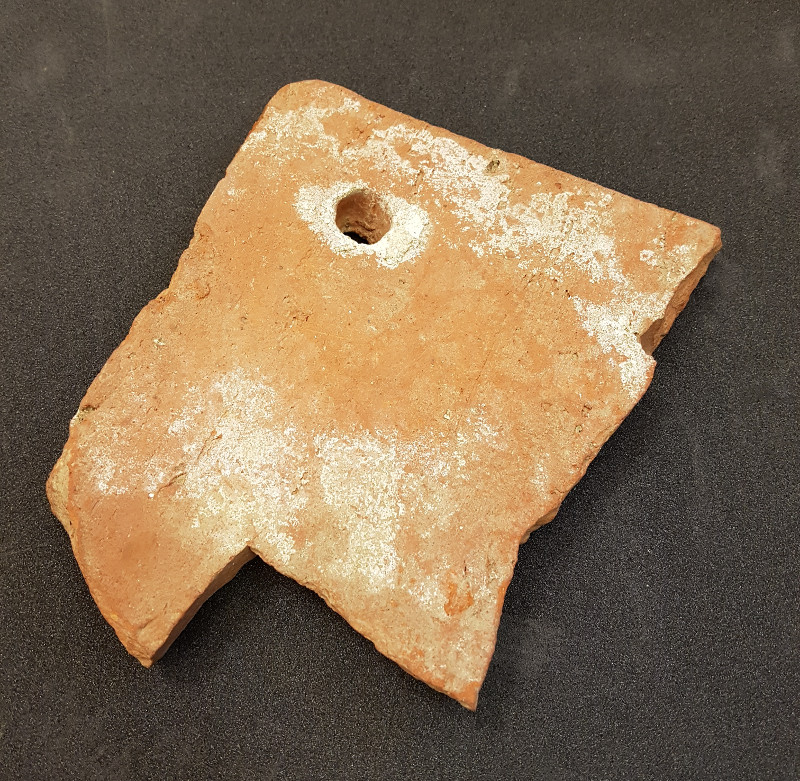
A roof tile from Reading Abbey
3. A Roof Tile
The tile with a hole through it is a roof tile. We can tell that it is a roof tile because it is not glazed and is thinner than floor tiles – this is because it won’t become as worn as a floor tile as no one will be walking on it. If it were too heavy the roof would collapse!
This particular example has a hole through its centre to position a peg through the tile to hold it in place. A tile is a bit useless by itself though, but when many of these were placed together to form a roof it keeps the people, beautiful carvings and tapestries safe from England’s changeable weather!
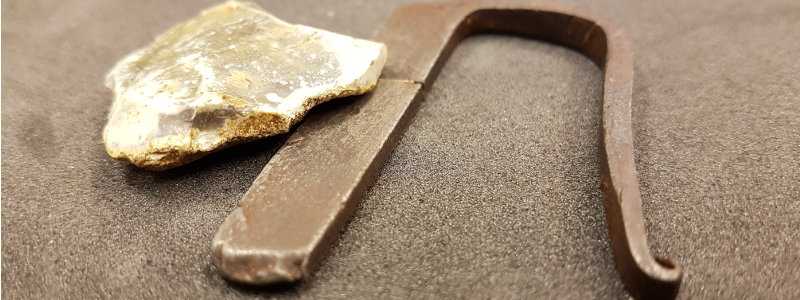
Strike-a-Light and Flint used to light fires
4. Strike-a-Light and Flint
This is a very old lighter! To use this, the striker was held by inserting as many fingers as possible into the space in the striker. Holding the striker like a kind of knuckle-duster and the flint-stone firmly in the other hand, it was swept vigorously downwards across an edge of the stone.
With a good piece of flint it was possible to get a spark, although it was often quite difficult to get it to land in the box. With a bit of luck, the spark would drop into the box and the tinder (some easily lit material) would begin to smoulder. It could then be blown on to produce a small flame.
A wooden or paper spill could then be lit from this flame and used to light a candle, or the fire, or whatever you needed a flame for. Imagine the Abbey monks getting up before dawn trying to raise a flame every morning in the cold and dark!
Finally, last but not least:
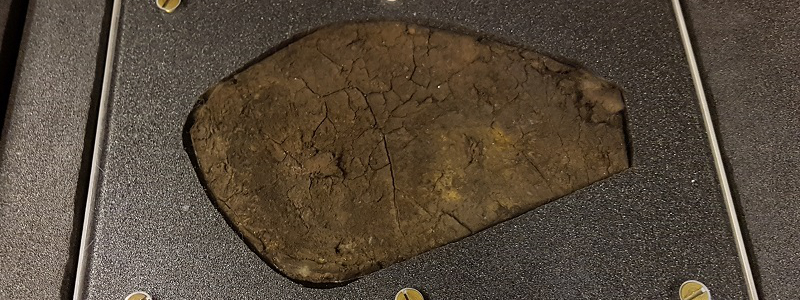
A piece of leather from a 'turnshoe' found in Reading Abbey
5. A piece of Leather
This fragment from a shoe was discovered in a highly waterlogged area and actually would not have survived in any other environment. It was preserved so well that the leather working to join pieces and create the shoe can still be seen!
This example may well have been a turnshoe, a shoe which was assembled and stitched together inside out, with the flesh side of the leather facing outwards and the grain inwards. Once stitched, the shoe would be turned the right way around, with the flesh side inwards and the grain side outwards. This method of construction was common in the medieval period.
There were many shoe fragments and leather off-cuts found when the abbey wharf site was excavated, which could mean that tanning and leather working took place in the area. This makes sense because a lot of activity took place at the Abbey and many people visited including, trades people, pilgrims, and royal courts. Tanning also required access to running water so they could dispose of waste.
Follow the link below to have a look at some more of our fantastic loan items!
